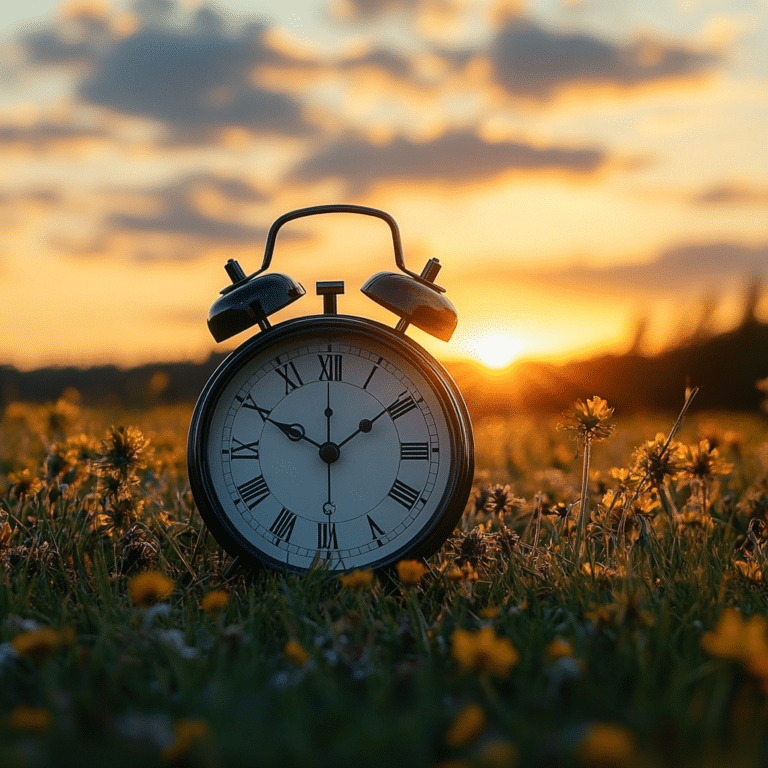
1. When Is Time Change? Understanding the Basics
The shift to daylight saving time (DST) affects millions every year. Many of us wonder, “when is time change for 2024?” In the United States, the clocks spring forward on the second Sunday in March and fall back on the first Sunday in November. In 2024, you’ll need to set your clocks forward one hour at 2:00 AM on March 10 and turn them back one hour at 2:00 AM on November 3. Knowing these dates can be crucial for planning travel, power consumption, and even personal events.
While the concept of time change might seem straightforward, it carries a plethora of impacts on our daily lives. Just take a moment to think about it—travel plans, work meetings, and family gatherings can shift gears with these changes. It’s not just the clocks that move; our lives do too!
So, as we gear up for these time changes, let’s ensure we’re prepared, both physically and mentally. After all, the more we understand about when is the time change, the better we can manage its effects.

2. When Does Time Change Globally? A Comparative Look
Not all countries adjust their clocks for daylight saving time. In fact, a striking contrast exists between nations, especially when comparing practices in North America and Europe.
2.1. North America and Europe
In North America, most states and provinces observe DST. However, Arizona (excluding the Navajo Nation) and Hawaii have chosen not to participate, which can create confusion. Meanwhile, our friends across the pond in the European Union are still riding the DST wave, with most countries continuing the tradition into 2024. Their time shift happens on the last Sunday in March and the last Sunday in October, creating a rhythm similar to ours but with its own quirks.
2.2. Countries That Don’t Change
Then there are places like Japan and India. Japan has not observed daylight saving time since World War II, holding onto a consistent time all year round. India, on the other hand, sticks with a single time zone—this makes it easy for everyone, but quite the contrast compared to its neighboring countries that do change times.
2.3. Countries With Offbeat Time Practices
Take Russia, for example. They used to juggle between winter and summer time but ditched DST in 2014, now opting for one consistent time all year. Even Iran has its own twist; they keep to daylight saving time from March to September, though the exact dates vary each year, which can complicate things for international travelers.

3. The Rationale Behind Time Change
You might be wondering: what’s the point of changing the clocks? The roots of daylight saving time lie deeply in the desire to save energy. Instituted during World War I and again during World War II, the idea was to cut back on artificial lighting. Sounds straight-forward, right? However, recent studies challenge the effectiveness of this practice.
In fact, a 2023 study from the University of California revealed that the energy savings from daylight saving time are negligible. While the theory may have seemed sound when it was introduced, the evidence today suggests we might be clutching at straws, with little to show for our twice-a-year clock adjustments.
Does it really pay off? That’s a question for energy policymakers worldwide.

4. How Time Change Affects Health and Productivity
You must be keeping track of your health and productivity. Studies have shown that time changes can negatively impact both.
4.1. Health Impacts
The spring shift often correlates with an uptick in heart issues and sleep disturbances. In fact, the American Academy of Sleep Medicine estimates the risk of a heart attack increases by 24% in the week following the change. Additionally, many people report feeling fatigued and irritable as their bodies struggle to adjust.
4.2. Economic Factors
Industries aren’t immune either. Businesses that rely on precise timing can suffer significant disruptions. According to a 2022 study from the National Bureau of Economic Research, productivity dips roughly 5% in the days after the time change. For companies like tech firms and financial institutions, those numbers are more than just statistics; they directly affect the bottom line.

5. Popular Myths About Time Change
A fair share of misconceptions surrounds the whole concept of time change.
5.1. “Daylight Saving Time Was Created to Help Farmers”
One frequent myth is that daylight saving time (DST) was instituted to benefit farmers. This is simply not true. The original intention was aimed at saving energy in industrial sectors, not at aiding agricultural practices. Farmers in fact, have sometimes found the time shift to be an inconvenience.
5.2. “Most People Adjust Easily to the Time Change”
There’s a common belief that everyone adjusts well to the time change. However, psychological studies suggest otherwise. While some might adapt quickly, a significant portion struggles. Awareness of this issue can help workplaces better manage expectations post-time change, leading to a healthier work environment.
6. Innovations in Time Management: What Lies Ahead?
With ongoing debates about the necessity of daylight saving time, many regions are eyeing potential reform.
6.1. Legislative Changes
States like Florida are pushing to stay on daylight saving time year-round. This change reflects a growing consensus on the need for consistency in time regulations across the United States, which could influence countless daily routines.
6.2. Technological Solutions
Let’s not forget technology. Smart devices and apps are now capable of automatically adjusting our clocks, sparing us the headache that usually accompanies the time change. These innovations may lessen confusion in households and businesses alike, offering a glimpse of a future where we won’t have to worry whether it’s time to ‘spring forward’ or ‘fall back’ anymore.
As we inch closer to the next time change, understanding its impacts on our lives can lead to better preparation. By grasping these shifts, from health implications to productivity dips, we can navigate the implications with ease. Here’s to making time work for us—after all, life moves fast enough without us getting tripped up by the clock.
When Is Time Change: The Surprising Facts You Need To Know
The History Behind Time Changes
Have you ever wondered how time change came about? It all started during World War I to conserve fuel. Countries that adopted daylight saving time (DST) found that they could save energy by making the most of daylight. Isn’t it fascinating that something as simple as setting clocks could evolve from a wartime strategy? Fast forward to today, and many states are still debating whether to keep or abolish DST. Curious fact: while most places do fall back and spring forward, Arizona and Hawaii have managed to keep things simple by skipping the seasonal shift altogether. If you ever want to switch your file format as easily as avoiding time change, you’d check out this easy guide on how to change Jpg To Png!
The Impact on Health and Society
Time change influences more than just our schedules; it can affect our health too. Research indicates that the shifting of the clocks can disrupt our sleep patterns, leading to everything from minor irritability to serious health issues. Dr. Jane Erin carrey, known for her work on health impacts, sheds light on how these changes can press on our well-being. If you need a mental break from all this talk about time, you might enjoy a daydream about the movie Xanadu, a film that gives you just a glimpse into how creativity can flow endlessly.
Interesting Tidbits for Everyday Life
Now, let’s sprinkle in some cool trivia! Did you know that the U.S. Energy Policy Act of 2005 extended daylight saving time by a few weeks? This change moved the start date to the second Sunday in March, raising many eyebrows. And here’s something you might not have guessed: the 3rd Reich used a similar system to try and maximize productivity during the war. Shocking, right? With all these historical bits swirling around, it can feel overwhelming—just like trying to clean out the junk in your phone’s cache. If you’re grappling with that, here’s How To clear cache on Android. It’s much easier than deciphering the rules of DST!
So why not keep your text communications low-key and keep it private? You can always send anonymous text messages to share your thoughts about time change without facing the usual scrutiny. And speaking of unique experiences, have you ever heard of Sibylle Szaggars? She’s an artist who uses her creative talents to express the passage of time in her work. Whether you strive to understand when is time change or simply want to relish in interesting stories associated with it, there’s always something surprising waiting to be uncovered.



























